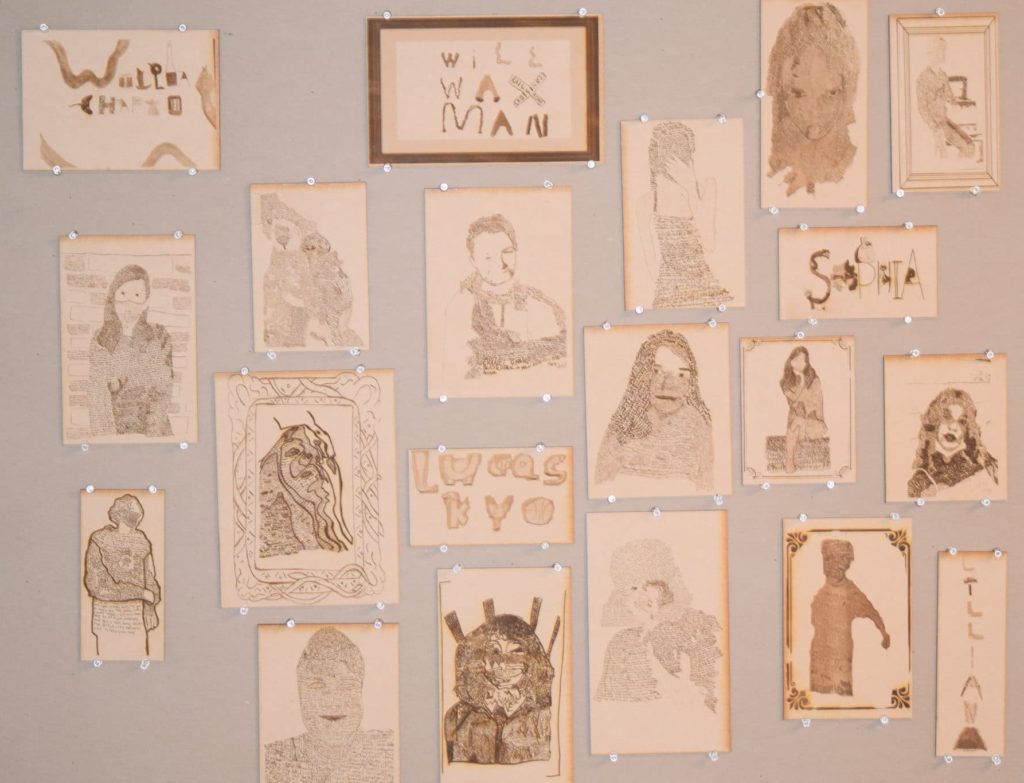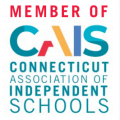Know your process, understand your intent.
Tamara Berdichevsky’s classroom in the DeFeo Art Barn is quite special. Bright, clean, and open, the space makes you feel like you can be an artist… even before you have learned anything.
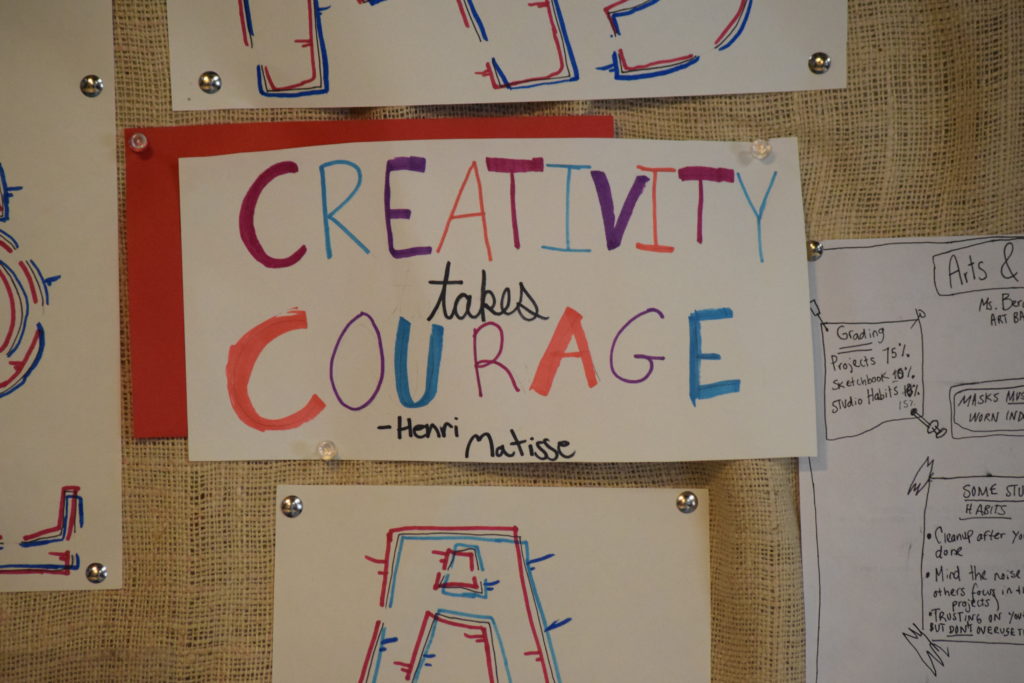
Recently, Berdichevsky’s 7th graders did a project that started with a graphic design segment. They began with a study of typography, working to understand the ways in which letters reflect feelings and how different fonts can make you feel a certain way. Berdichevsky explains, “I wanted my students to experiment with the idea that changing the design or typeface of a word can affect the meaning. Their first assignment was to take a word like jump and lay it out on a page using type to convey the feeling of the word just using the letters.”
From this exercise, the private school students were asked to consider creating something that conveys themselves. “I didn’t want my students to do a typical self-portrait. I wanted to integrate typography and graphic design, so I decided to give my students the opportunity to explore micrography. I let the kids choose, either typography or micrography (which is the art or practice of designing with very small characters). Essentially, you fill in something just using words, instead of coloring it in. I was pleasantly surprised that 90% of my students chose this option…which is the harder option. More intriguing, yes; but definitely harder.”
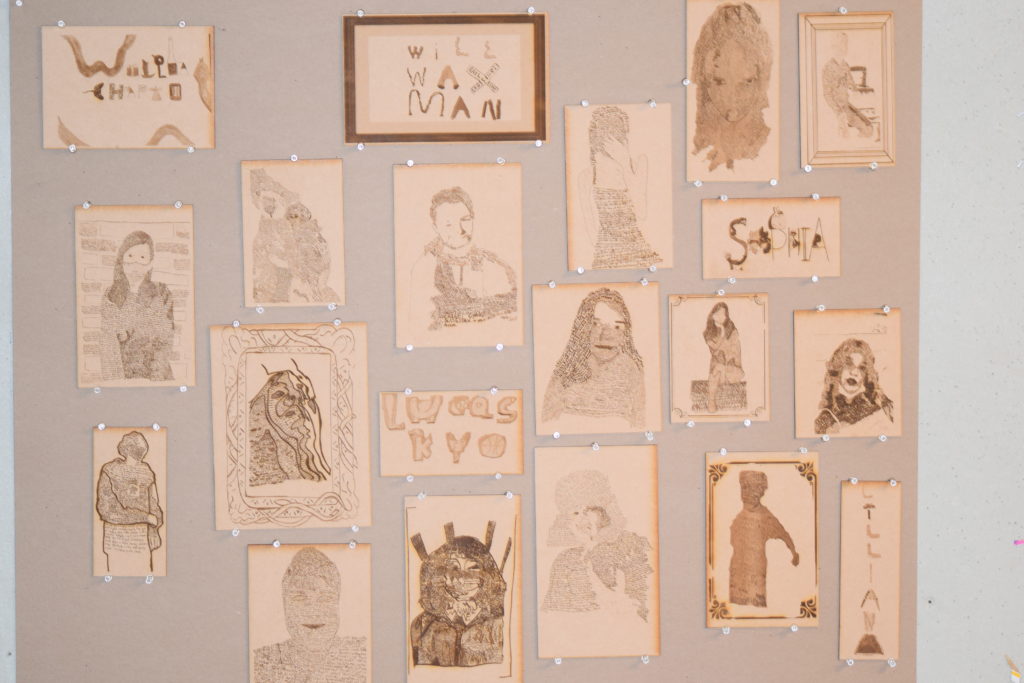
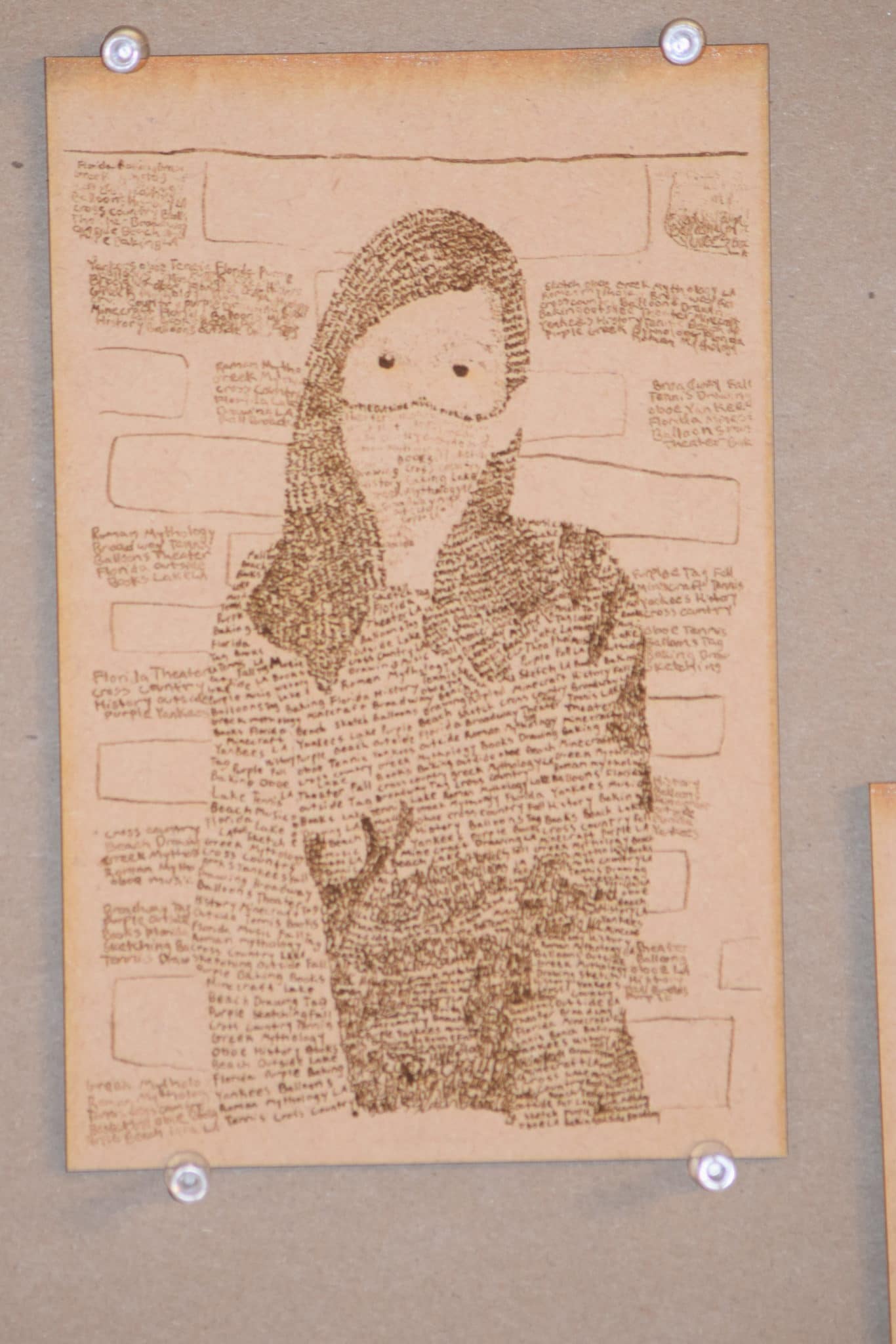
In Our Private School, Visual Arts Students Demonstrate Desire To Learn
The artistic process behind Berdichevsky’s micrography project is that first each student takes a photo of themselves and edits the photo in Photoshop, using a filter that highlights the light and dark values, from which they can create outlines of their portraits. Then, once they have the outlines, they do the shading of the portraits using words that relate to them: lyrics, quotes, lists of things they love, poems, etc.
Berdichevsky reflects, “I realize that it is a time-consuming project that has a lot of steps before the students get to the end result. In my opinion, the amount of time the students devote to the process is representative of students’ willingness and desire to learn. The amount of work they do gives them a great deal of satisfaction when they are done.”
Berdichevsky loves teaching at Watkinson. “I used to teach in an afterschool program and it was so structured; I was frustrated by the fact that all the students’ cutouts of penguins had to look the same. What if the student didn’t want a round penguin? What if they wanted an oblong penguin or a rectangular penguin? What if they wanted something that was half penguin/half panda? If all art looks the same, how do you know who made it? When you see an individual person’s point of view, you get to know the person.”
Berdichevsky loves that she has this freedom at a private school like Watkinson. She recounts, “Recently an 8th grader was working on an assignment and was just not feeling it. The student’s previous school had fostered an atmosphere of pressure about art – it was all too structured. I asked her to shift her mindset. Her job is to understand the process of making her art and understand your own intent; that’s how you get the best result. The process and the relationship are what are crucial.”
We think the results of the project speak for themselves.
To learn more about the ways in which creativity is manifested at Watkinson, watch this video of MS Head Jenny Esposito describing the ways creativity, empowerment, and dreaming go hand in hand at Watkinson.

